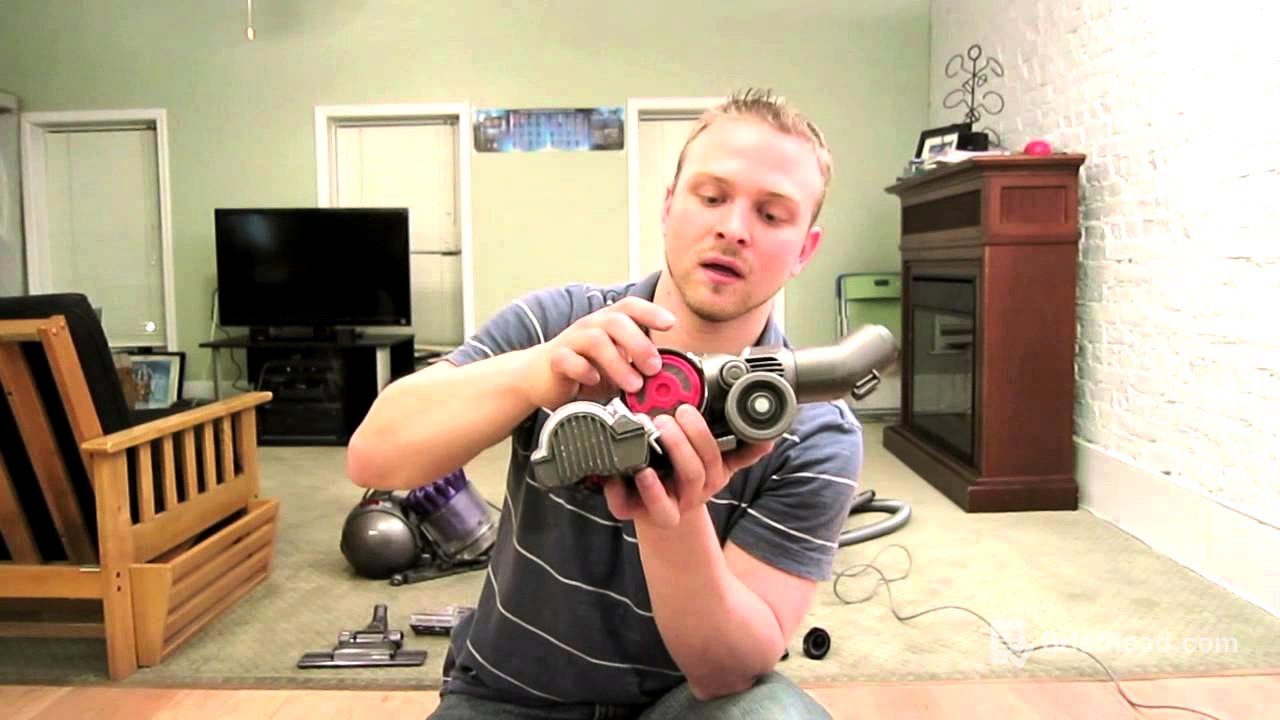TLDR;
This video provides a detailed comparison between the Dyson DC23 and DC39 vacuum cleaners, including their features, maintenance, and available tools. It covers aspects such as suction power, mobility, filter maintenance, canister capacity, brush head differences, and additional tools included with the Animal Plus edition. The video aims to help potential Dyson owners understand the nuances of each model and how to maintain them effectively.
- Suction power and mobility differences between DC23 and DC39.
- Maintenance tips for filters and canisters.
- Comparison of turbo head and trigger head tools.
- Overview of additional tools included with the Animal Plus edition.
Introduction [0:05]
The video introduces a comparison between the Dyson DC23 turbo head and the DC39 trigger head vacuum cleaners. It also covers additional tools available with the Animal Plus Edition and provides maintenance tips for Dyson vacuums. This information is aimed at potential Dyson owners.
DC23 vs DC39: Suction and Mobility [0:28]
The Dyson DC23 has 220 air watts of suction, while the DC39 has 275, marking a 25% increase in suction power. The DC23 features three wheels, including a pivoting top wheel, and a retractable electric cord. The DC39 is designed for better balance and requires less effort to pull. Its hose and canister pivot slightly from right to left, unlike the DC23, where the hose always points to the right. The DC39 has five wheels: two in the ball, two in the middle, and one at the top. It includes buttons for power, cable retraction, and canister removal.
Filters and Maintenance [2:02]
Dyson vacuums use HEPA filtration, eliminating the need to buy replacement filters, unlike some other brands that require filter replacements costing around $40 per year. To access the filter on the DC23, twist the knob by the wheel and pull it out, washing it every 3 months with water and air drying. For the DC39, push the gray button to open the handle, remove the canister, and wash the filter with water, allowing it to dry for 24 hours. Dyson vacuums cannot be used when the filters are wet.
Canister Differences and Cleaning [2:52]
The Dyson DC23 canister appears larger but has a smaller storage capacity of 0.44 gallons, compared to the DC39's 0.53 gallons due to more internal plastic. Both models have a red button to release the contents, which should be emptied outside to prevent dust from re-entering the cleaned area. If emptying indoors, use a closet or under-sink trash can. A gray button allows for cleaning out stuck debris.
Brush Head and Cleaning [3:50]
The DC23 has small, hard holes on the brush head that can get plugged, requiring a toothpick for cleaning. The DC39 features a mesh screen that is easier to wipe clean and less prone to clogging. The DC39's brush head is also easier to clean due to fewer crevices. Both brush heads have flexible plastic that clicks into place after aligning the back notches.
Noise Levels and Suction Power [5:25]
The Dyson DC39 is slightly quieter than the DC23, although the attachment is a bit louder. The DC39's attachment spins slower on carpeting because it is air-driven, not belt-driven. The DC39 has 275 air watts of suction, which is more than Dyson's leading upright model, the DC41, which has only 235 air watts.
Turbo Head vs. Trigger Head [6:19]
The older turbo head has a larger profile and its brush may spin slowly over time. The brush bar can be turned on and off using a red button. Maintenance involves twisting and pulling it off to cut away any trapped debris. The trigger head has four wheels and pivots to maintain suction. It can be disassembled using a quarter to remove the brush bar, which is designed to push debris towards the center and is made of carbon fiber to reduce static. The trigger on the wand is meant to turn the brush bar on and off by creating a gap to reduce suction, but it may not always work reliably.
Additional Tools and Extensions [7:16]
The Dyson DC23 comes with a stair tool, crevice tool, and brush tool. The DC39 combines the brush and crevice tools into one. The stair tool is designed for cleaning the vertical sides of stairs and small crevices. The DC39's tools clip onto the wand for easy access. The Animal Plus edition includes a mini turbine tool, useful for car seats and couches, and a dust brush tool for ceiling fans and tables. For blinds or similar tasks, the wand can be removed to use the handle directly for better maneuverability.









